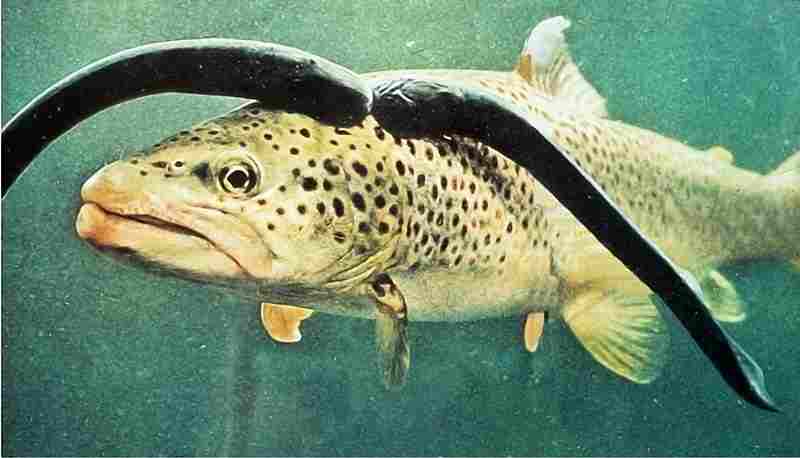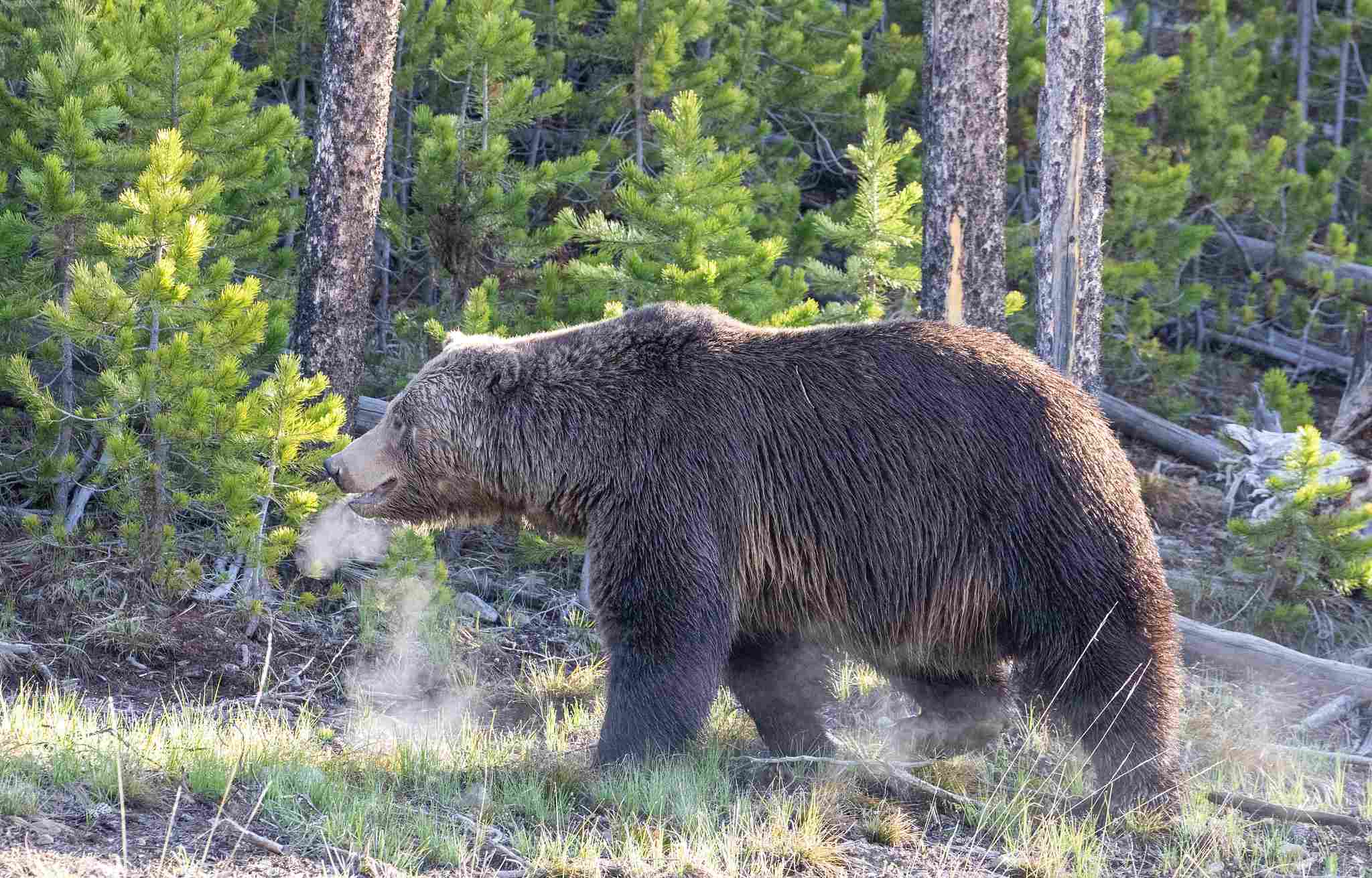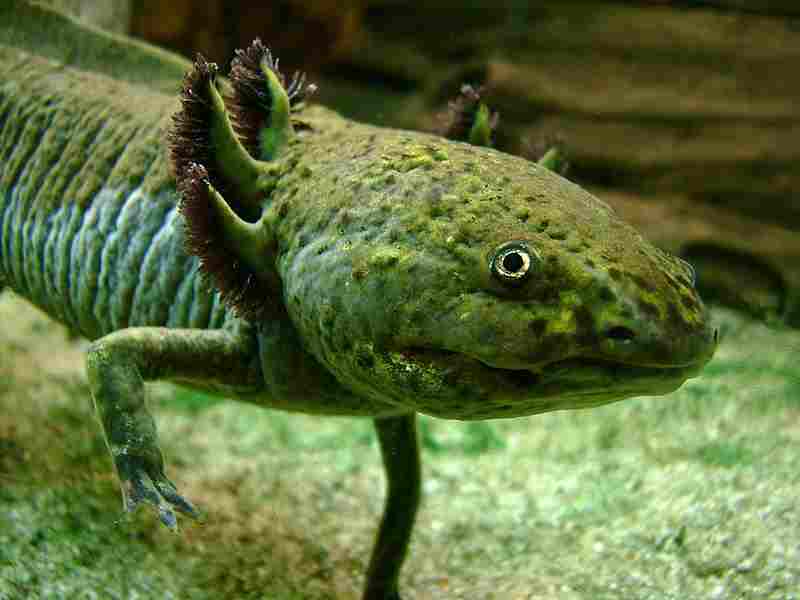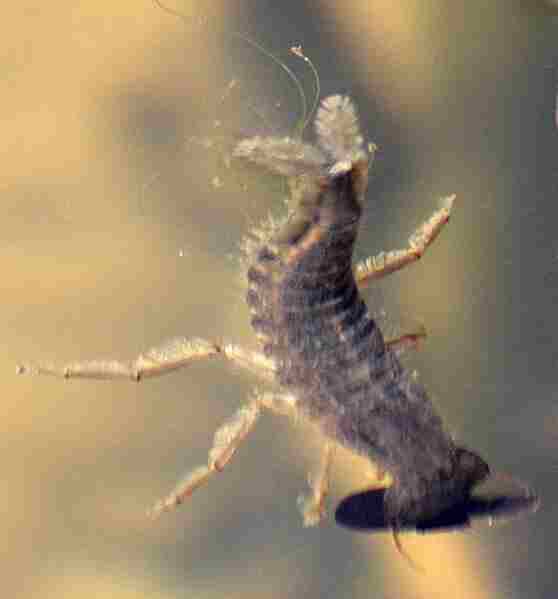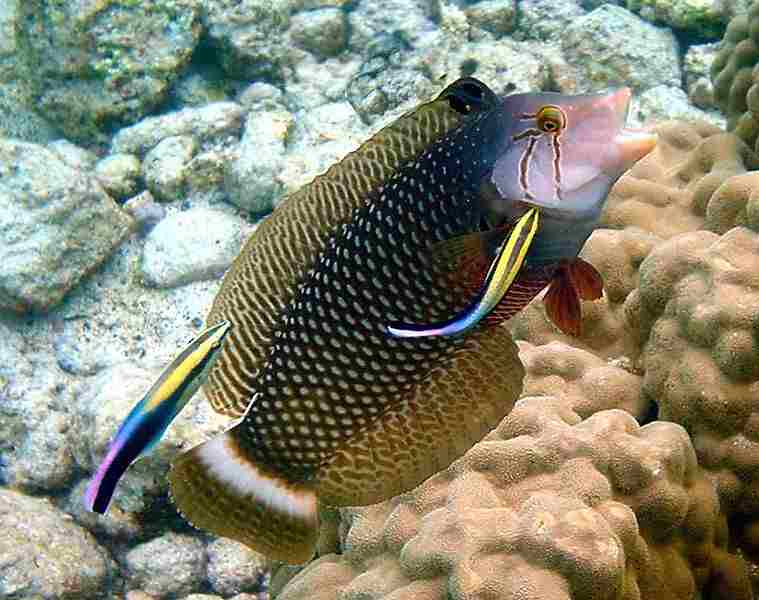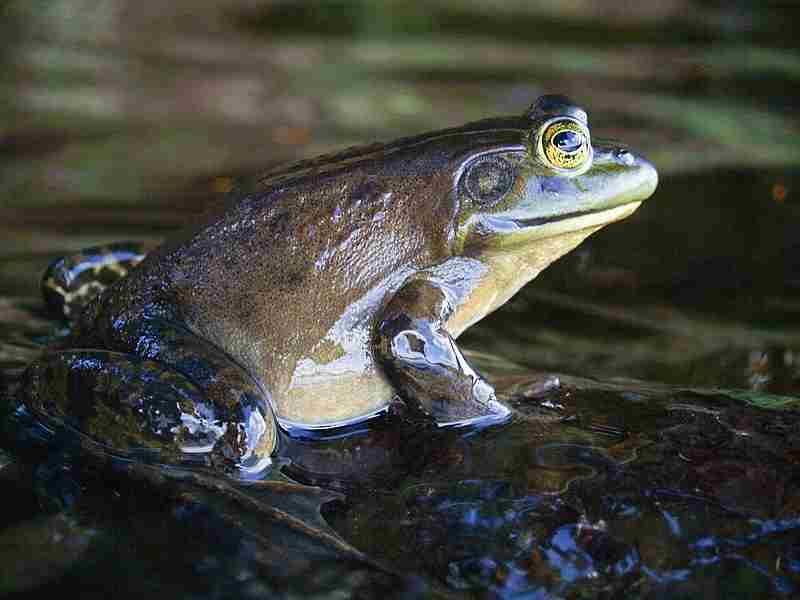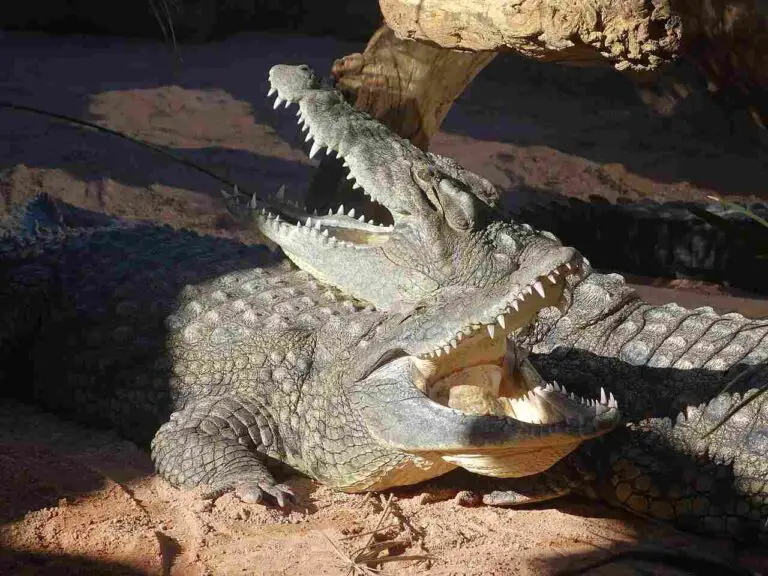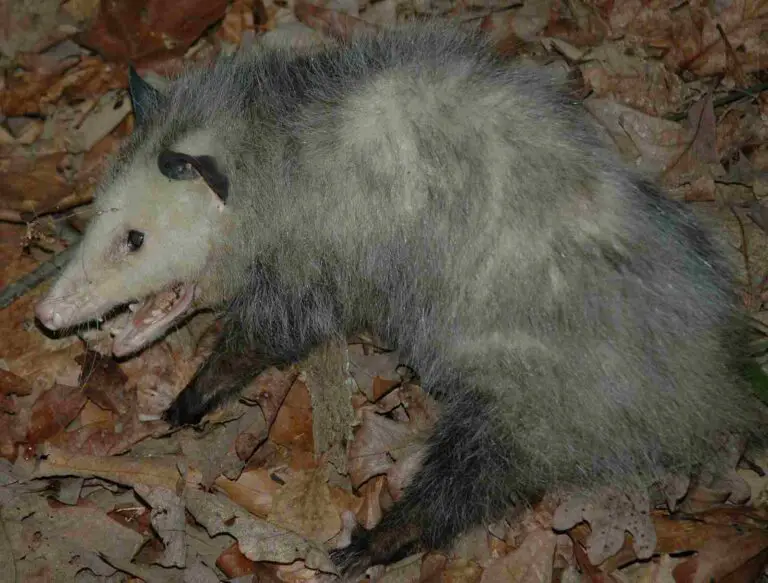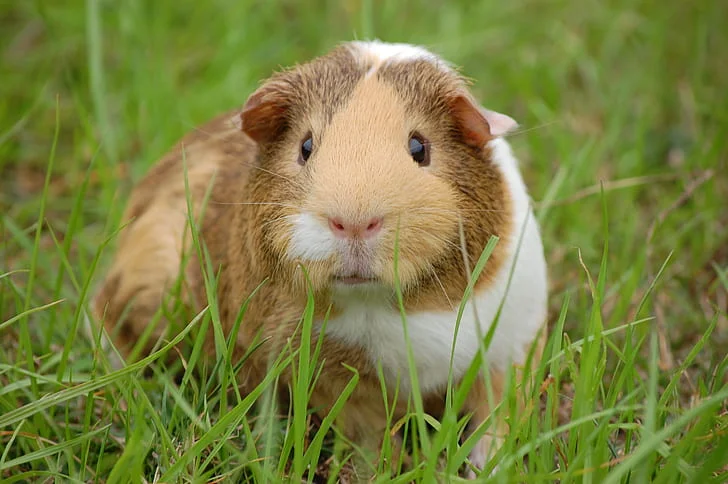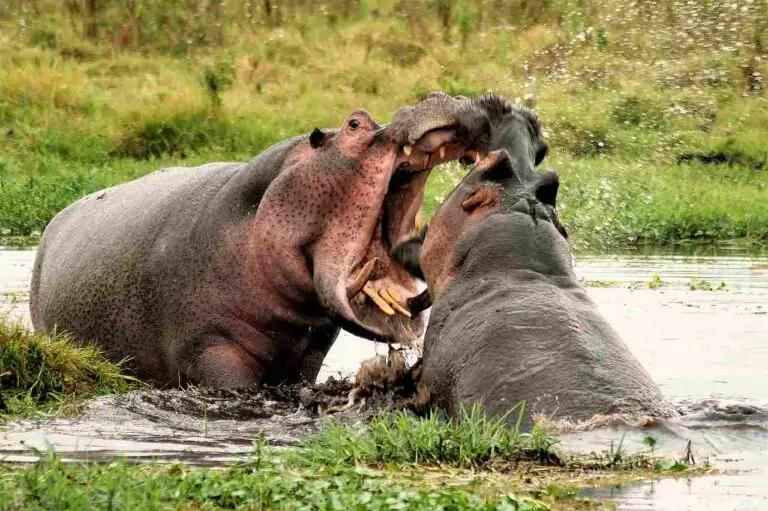11 Biotic Factors in a River Ecosystem and Their Significance
Biotic factors in a river are; producers, herbivores, carnivores, omnivores, decomposers, mutualism, commensalism, parasitism, predation, adaptation, and competition.
This article discusses the biotic factors in a river and their significance, as follows;
1). River Producers (as one of the Biotic Factors in a River Ecosystem)
Producers are the trophic foundational elements of any ecosystem, including rivers, streams, lakes and ponds.
In freshwater biomes like rivers, producers mainly consist of aquatic plants and algae. The role of these organisms is crucial, as they initiate the sequence of energy transfer, through the ecosystem, and support various trophic levels (directly and indirectly).
This section looks at the significance of producers in river ecosystems.
Significance and Contributions of Producers in River Ecosystems
The significance of river producers is based on their contributions to primary production, oxygen cycling, food provision, habitat and shelter creation, recycling of nutrients, hydrological dynamics, and overall ecosystem productivity.
Producers in rivers, such as aquatic (vascular and non-vascular) plants and algae, harness solar energy in the form of light, through photosynthesis.
This biochemical process enables them to transform solar energy and inorganic raw materials (carbon dioxide, water) into organic compounds, such as carbohydrates [10]. These compounds serve as the primary source of food and bioenergy for all other organisms (heterotrophs) in the ecosystem.
An essential byproduct of the photosynthetic process carried out by aquatic plants and freshwater algae, is oxygen. As these producers consume carbon dioxide and water, they release oxygen, thereby playing a key role in maintaining the required oxygen levels for the respiration of aquatic animals. This mechanism of oxygenation is vital with regards to the metabolism and survival of many organisms within the river ecosystem.
Importantly, aquatic plants and algae serve as a direct energy resource, as their biomass can be consumed as food by many herbivorous organisms in rivers, including various species of mollusks, arthropods, and small fish. In this manner, they support the second trophic level in the aquatic food chain (which is occupied by herbivorous primary consumers), and allow energy to flow upwards to higher trophic levels.
The physical structures of producers, especially submerged plants, add to habitat complexity and availability within river environments. This complexity is vital for many aquatic species, as it offers shelter, anchorage points, foraging grounds, and breeding sites. It contributes to the species richness, biodiversity and ecological sustainability of the river.
Aquatic vascular plants and algae, play a joint role in nutrient cycling within the river biome. They are known to absorb/assimilate and store essential nutrients like nitrogen, potassium and phosphorus, and help to regulate nutrient levels in the water column. This function is critical for maintaining water quality and preventing nutrient-induced pollution.
The presence of vegetation in rivers can also influence the dynamics of water flow. Dense aquatic meadows can slow down water flow, thereby reducing erosion and providing mechanical stability to the riverbed [2]. This, in turn, tends to influence sediment transport and water clarity.

Productivity of river ecosystems, measured by the amount of organic matter produced, is closely linked to the abundance and performance of its producers. Healthy populations of aquatic plants, phytoplankton and macroalgae, contribute to higher ecosystem productivity, to the benefit all trophic levels in the food web.
2). River Herbivores
Herbivores are a critical component of river ecosystems, because they are fully involved in establishing and sustaining the ecological structure of these environments.
The significance of herbivores in river ecosystems is discussed in this section.
Significance/Contributions of Herbivores in River Ecosystems
River herbivores are significant for their contributions to plant consumption, trophic transfer, nutrient cycling, population control, habitat modification, ecosystem indexing, and water quality control.
The main food sources for most herbivores in rivers are algae, aquatic and riparian vegetation. They consume a broad variety of autotrophic materials, including filaments, leaves, stems, and spores. This pattern of consumption helps to control plant populations and prevent overgrowth/overpopulation, thereby ensuring a balanced ecosystem.
Herbivores occupy the second trophic level in the food chain of river ecosystems, directly above the primary producers (hydrophytes and algae). They function as an important link that connects primary producers to organisms in higher trophic levels, such as predatory fish and birds. By transferring energy from producers to these predators, herbivores facilitate the continuous flow of energy resources through the ecosystem.
Feeding activities of herbivores contribute immensely to nutrient cycling in the river ecosystem. As these herbivores consume autotrophic biomass, they assimilate essential nutrients, which are later released into the environment through excretion and biodegradation. This nutrient recycling mechanism is essential for the maintenance of water quality and support of primary production.
As implied earlier, herbivores help to control the abundance of plant species within river habitats. In the absence of herbivores, some competitive plant species might become dominant, leading to the exclusion of other, less-resilient groups. Herbivores prevent excessive autotrophic growth and promote biodiversity by creating ecological avenues for coexistence of different producer species.
Certain herbivorous organisms, like beavers; have a significant impact on river ecosystems through their various habitat-modifying activities. These organisms can be referred to as ecosystem engineers [13]. Beavers build dams and establish wetland habitats, which are beneficial to a wide range of species. These modifications can increase habitat complexity and diversity.

In ecological study, herbivores can be used as indicators of the overall health and functionality of a river ecosystem. Changes in the population dynamics of herbivores can signal the influence of stimuli like shifts in plant communities, habitat suitability, and water quality, providing valuable insights for ecosystem monitoring, analysis and conservation.
Activities of herbivores, such as grazing on benthic algae and aquatic plants, can influence water quality in the river by affecting sediment dynamics, turbidity and nutrient levels. Their presence can help to maintain clear water conditions while preventing excessive algal growth.
3). River Carnivores (as one of the Biotic Factors in a River)
Carnivores are vital biotic components of freshwater ecosystems, and have multiple essential roles within these environments.
An extensive overview of the significance of carnivores in river ecosystems is provided below.
Significance and Functions of Carnivores in the River Ecosystem
Carnivores in the river ecosystem are significant for their functions with regards to trophic regulation, biodiversity support, trophic cascading, nutrient cycling, ecosystem indexing, top-down control, adaptive facilitation and habitat modification.
The upper trophic levels in river food webs are occupied by carnivores, which often serve as advanced predators. These organisms help to regulate prey populations, including herbivores and other lower consumers. By controlling prey abundance, carnivores prevent overgrazing on aquatic vegetation, and contribute to maintaining a balanced ecosystem.
Biodiversity is maintained by carnivores through influencing the composition and numbers of prey species. Through the act and process of predation, they are able to prevent any single species from dominating the ecosystem.
It is well known that carnivores can trigger trophic cascades, which are highly-effective ecological phenomena. For instance, the presence of an active carnivore like a river otter can lead to a decrease in the abundance of herbivorous fish. This, in turn, can have indirect effects on lower trophic levels that are occupied by hydrophytes and algae, thereby altering the entire ecosystem's framework and functionality.

River carnivores play a major role in nutrient cycling, by transferring nutrients and energy and from prey-biomass to themselves (through predatory feeding) and eventually to decomposers in the form of organic waste and body remains. This dynamic leads to the recycling of essential nutrients in the ecosystem, and can affect both primary production and overall ecosystem wellbeing.
Changes in the composition and/or size of carnivore populations, can be analyzed as indicators of the vitality and stability of river ecosystems. This implies that monitoring carnivore populations can provide relevant insights into broader ecological changes, including shifts in prey abundance, disease outbreaks, and hydrological alterations.
As portrayed by the trophic cascading concept, carnivores exert top-down control on the entire ecosystem, influencing not only the populations of their direct prey, but also those of organism in lower trophic levels. The presence of carnivores can affect the abundance and adaptive development of herbivores, some omnivores, and primary producers, ultimately influencing the entire food web.
Through their foraging and hunting activities, river carnivores can modify their habitats. In addition, carnivore presence can influence the behavioral adaptation of other animals [8], potentially resulting in changes to their distribution and activity patterns.
Several carnivores can be utilized as keystone species, implying that their presence can have a disproportionate impact on the ecosystem.
For instance, river otters can control invasive species on a largescale, including crustaceans like rusty crayfish (Orconectes rusticus) and signal crayfish, (Pacifastacus leniusculus), preventing them from disrupting native communities. In such scenarios, the smallest decline in regional abundance of these otters can have notable ecological and environmental impacts through the domination of the invasive organisms.
Asides river otters, other examples of carnivores in the river ecosystem are; crocodile, eel, and kingfisher.
4). River Omnivores
Omnivores in freshwater ecosystems have diverse and essential roles to play, by which they contribute to the dynamics of their habitat.
These organisms include species that consume both autotrophic and heterotrophic biomass, which enables them to have a versatile impact on the ecosystem.
The significance of omnivores in freshwater ecosystems is discussed here.
Significance and Functions of Omnivores in Rivers and Other Freshwater Ecosystems
The significance of omnivores in rivers is based on their contributions to trophic flexibility, nutrient cycling, prey and plant control, biodiversity regulation, trophic cascading, ecosystem indexing, establishment of ecological resilience, and food web sustenance.
Trophic flexibility is a core attribute of omnivores in river ecosystems which are, capable of adjusting their dietary components based on the availability of food resources [11]. This adaptable quality allows them to thrive in different ecological niches and under diverse conditions within the freshwater ecosystem.
Omnivores contribute to nutrient cycling within the river ecosystem. By feeding on both plant/algal material and other organisms, they participate fully in the transfer of energy and nutrients through different trophic levels. This function influences the availability of such resources to primary producers, and the overall nutrient dynamics of the ecosystem.
In many cases, omnivores help to control the populations of both heterotrophic prey species and autotrophic producers. For example, some omnivorous fish and crustacean species consume aquatic insects, worms, crustaceans, organic particles, aquatic plants and algae. As a result, they help maintain the balance between herbivorous organisms and primary producers.
Ability of omnivores to exploit diverse food sources, can influence species composition and diversity within the river ecosystem. They can help to prevent the imbalances caused by excessive dominance of particular species, thereby fostering species diversity.
In a similar manner to carnivores, omnivores can trigger trophic cascades, by controlling the populations of prey organisms and affecting the vertical profile of the food web. Their presence or absence can lead to indirect effects on primary producers and lower consumers.
Some omnivores can also serve as indicators of ecosystem health. This is because changes in their abundance, spatial distribution or behavioral trend can signal shifts in habitat quality or the availability of food resources, within the ecosystem.
The resilience of the river ecosystem to external and internal changes, can be enhanced by omnivores. Their ability to switch between various types of food sources can help stabilize ecosystem dynamics during fluctuations in resource availability, and may provide a basis of regeneration from ecological hazards like resource depletion.
Omnivores often occupy intermediate trophic levels in aquatic food chains, so that they bridge the gap between primary producers and high-level predators. They help to transfer nutrients and chemical energy from lower to higher trophic levels.
5). River Decomposers (as one of the Biotic Factors in a River)
Decomposers represent another vital component of freshwater ecosystems, and can be found in rivers, lakes, ponds, and marshes.
They are mostly microorganisms, such as bacteria and fungi, which serve crucial functions in waste management (by decomposition) and local nutrient cycling, contributing significantly to the sustenance of the ecosystem.
Here, some key roles and contributions of decomposers in freshwater ecosystems like rivers are discussed.
Key Roles and Contributions of Decomposers in Rivers and Other Freshwater Ecosystems
Decomposers in freshwater habitats like rivers, contribute to the ecosystem through nutrient recycling, waste decomposition, detoxification, energy transfer, habitat improvement, and organic carbon cycling.
The role of decomposers in the breakdown of organic matter is pivotal, and emcompasses various substrates including remains of dead plants and animals, fecal matter, and biogenic detritus.
They convert the complex organic compounds in these substrates, into simpler forms, and release essential nutrients like carbon, phosphorus, sulfur and nitrogen, back into the water and sediments. These recycled nutrients thereby become available for uptake by primary producers (hydrophytes and algae) through a process referred to as mineralization [3].
Decomposers help in the management (recycling and removal) of organic waste materials that are deposited in the freshwater ecosystem. This includes shed leaves, animal waste, and organic detritus from terrestrial sources that wash into rivers and lakes in stormwater. By breaking down such materials, decomposers prevent the accumulation of organic waste, which could lead to water quality issues and disease outbreaks.
As implied in the above explanation, decomposers can detoxify harmful compounds that are present in organic matter. They are capable of breaking down pollutants, reducing their impact on aquatic life. This detoxification process is sometimes utilized in bioremediation projects, to reverse the effects of pollution in fluvial zones.
Energy transfer within the river food chain is facilitated by decomposers. They break down organic matter and convert it into nutrients, which can then be assimilated by consumers, that are the primary food source for heterotrophs in higher trophic levels. This energy flow pattern connects decomposers to primary consumers, secondary consumers, and so on, and ensures a continuous flow of energy through the ecosystem.
The decomposition activity of bacteria and fungi can improve the conditions and nutrient content of substrate materials in aquatic habitats. By breaking down organic matter, decomposers produce organic supplements that mix with the substrate and increase its value to various aquatic organisms, including detritivores and submerged plants.
Lastly, decomposers play a defining role in the carbon cycle of freshwater ecosystems. They metabolize organic carbon contained in the remains of dead plants and animals, releasing carbon dioxide (CO2) into the water. This dissolved CO2 becomes accessible for primary producers to utilize during photosynthesis.
Decomposers in a Freshwater Marsh
Decomposers in a freshwater marsh are primarily bacteria and fungi. These microorganisms typically occur in the water and bottom substrate of the marsh.
They break down organic materials, including plant remains and animal waste, thereby contributing to nutrient recycling, and maintaining the overall wellbeing of the marsh ecosystem.
6). River Mutualism
Mutualism is a fundamental ecological concept, that is as relevant in river ecosystems as it is in any other natural habitat.
It can be described as the symbiotic relationship between two different species in which both parties benefit [14]. In river ecosystems, mutualistic interactions are essential in their roles toward promoting the health and equilibrium of the ecosystem.
This section discusses how mutualism functions as a biotic factor in a river ecosystem.
Functions of Mutualism in a River Ecosystem
Mutualism has several functions in the river ecosystem, including nutrient cycling, pollination, water purification, and seed dispersal.
One significant aspect of mutualism in rivers is nutrient cycling. For example, aquatic plants; including submerged and emergent species, form mutualistic relationships with nitrogen-fixing bacteria.
These bacteria live within the root tissues of these plants, and convert atmospheric nitrogen into a form that the plants can use for their growth. In return, the plants provide the bacteria with organic compounds as a food source. This mutualistic relationship ensures a steady supply of essential nutrients like nitrogen in the river ecosystem, benefiting both the plants and the bacteria.
Mutualistic relations also facilitate pollination.
In riparian zones alongside rivers, various flowering plants rely on pollinators such as bees, hummingbirds and butterflies for reproduction. Generally, these pollinators are drawn to the flowers in search of nectar and, in the process, pick-up and transfer pollen from one flower to another, thereby facilitating fertilization of the plants. This mutualistic interaction ensures the successful reproduction and continuity of both the plants and the pollinators, as the latter obtain food sources in the form of nectar and, in some cases, pollen.

Filtration and cleansing can occur in freshwater mutualistic relations. Certain aquatic organisms, such as freshwater mussels; engage in mutualistic relationships with fish. It must be acknowledged that there are varying opinions about the precise classification relationship (either as mutualism, commensalism or ammensalism), due to its distinction from the direct exchange dynamic of typical mutualism.
The mussels attach themselves to the fins or gills of fish, using them as a transportation medium to find new habitats. In return for being transported, the mussels filter and cleanse the water (while feeding), removing suspended particles and improving water quality. This dynamic benefits the mussels by providing them with a means of dispersal and continuity, while the fish benefit from cleaner water conditions
Along riverbanks, mutualistic interactions occur between fruit-bearing plants and herbivorous/omnivorous animals like birds and mammals. These animals feed on the fruits and subsequently disperse the seeds in their droppings as they move along the river. This process of mutualism allows riparian plants to expand their areal range and establish new populations, while the herbivores and omnivores gain a food source.
Example of Mutualism in Freshwater
An excellent example of mutualism in freshwater ecosystems like rivers; is the relationship between the Nile crocodile (Crocodylus niloticus) and the crocodile bird (also known as the plover bird or Egyptian plover) [12].
In this mutualistic partnership; the Nile crocodile, a large predator, allows the smaller crocodile bird to approach it without attacking.
The crocodile bird cleans the crocodile's teeth and removes parasites from its skin, thereby benefiting from a meal of leftover food scraps from the crocodile, and protection from potential predators while foraging.
This mutualistic association is advantageous to both parties; the crocodile gets parasite removed and dental hygiene, while the crocodile bird gets access to food and protection. Such interactions contribute to the overall sustainability of the river ecosystem by promoting the well-being of all species involved.
7). River Commensalism (as one of the Biotic Factors in a River)
Commensalism is a dynamic ecological interaction that features a scenario in which one species benefits from another species without causing harm or providing any significant benefit in return.
In river ecosystems, commensalism is instrumental toward establishing and sustaining the dynamics of the ecosystem.
This section discusses how commensalism contributes as a biotic factor in river ecosystems.
Contributions of Commensalism to the River Ecosystem
Commensalistic relationships in rivers, provide transportation, shelter, autotroph sustenance, and adaptive facilitation to inhabitants of these ecozones.
One common example of commensalism in rivers is the scenario where certain aquatic organisms use other species as a means of transportation or a source of shelter. Fish, for instance, can act as carriers for smaller organisms like hitchhiking aquatic insects and/or parasites. These smaller organisms benefit from the movement of the fish, and the protection it provides against predators, while the fish remains generally unaffected.
Algae in rivers and streams, can be involved in commensal associations with various aquatic organisms. Some algae attach themselves to the shells, scales or skin of aquatic animals, such as fish and turtles [15]. In these relationships, the algae gain access to waterborne nutrients and sunlight, while the host animals, typically, are not significantly impacted.
It is not uncommon for aquatic organisms to develop and exhibit adaptations that facilitate commensal relationships. For instance, the giant river turtle possesses a flattened shell that provides an attachable surface without compromising the turtle's streamlined shape. Algae grow on this shell, benefiting from the transport and exposure to sunlight provided by the turtle. The turtle, in turn, is not adversely affected by the algae's presence.
Example of Commensalism in Fish (With Respect to the Entire Aquatic Ecosystem)
One of the most well-known examples of commensalism in fish is the relationship between remoras, also known as suckerfish, and large marine species like sharks.
Remoras possess a modified dorsal fin that functions as a suction cup, and allows them to attach themselves to the scales or hide of larger marine animals like whales, sharks, or whales.
While attached, remoras benefit from the shelter, mobility and food scraps that are provided by the host animal. They can feed on the leftovers of the host, as well as on disturbed by the host's activities.
The host animals, such as sharks, are generally not affected to any significant degree by the presence of remoras. While they might not receive any notable benefit, they are neither harmed by the remoras' attachment.
This commensalistic association is completely advantageous for remoras, which gain access to food and protection, and does not occur at the expense of the larger marine animals, which typically experience no significant negative consequences.
8). River Parasitism
Parasitism is a biological interaction where one organism, referred to as the parasite, benefits at the expense of another organism, called the host.
In river ecosystems, parasitism is a natural and relatively complex component of the biotic framework. This section discusses how parasitism functions as a biotic factor in river ecosystems.
Function(s) of Parasitism as a Biotic Factor in River Ecosystems
Parasitism in rivers can lead to resource exploitation, population and diversity regulation, as well as disease transmission.
As implied earlier, parasites are organisms that survive mainly by utilizing resources, such as nutrients or shelter, from their host organisms. In river ecosystems, a broad range of organisms, from fish to invertebrates, can function as hosts for various parasitic species. These parasites can be harmful to their hosts by affecting their health, behavioral patterns, or reproductive capabilities.
Parasitism can impact the population dynamics of host species in river ecosystems [9]. When harmful parasites are abundant, they can cause largescale reduction of the fitness and abundance of host populations. This, in turn, can have ripple ecological effects on the entire ecosystem, as changes in the abundance of one species can affect the availability of resources for others.
Many parasites in river ecosystems function as vectors for diseases, so that they pose risks to both aquatic and terrestrial animals that interact with these ecosystems. Transmission of parasitic diseases can affect not only the host species but also other organisms that interact with these hosts in the ecosystem.
Example of Parasitism in Rivers
A classic example of parasitism in rivers and lakes is the interaction between lampreys and trout [4].
Lampreys are jawless fish that can be found in both marine and some freshwater bodies (in the latter, they often occur as invasive species), and which attach themselves to other fish, including trout, using their sucker-like mouths. They then feed on the blood and bodily fluids of their hosts, causing harm to the host fish.
![Biotic Factors in a River Ecosystem: Association between Lampreys and Trouts Represents Parasitism (Credit: Sweeting, Roger [Photographer] 2008 .CC BY-SA 3.0.)](https://www.felsics.com/wp-content/uploads/bioriver5-compressed-300x172.jpg)
In this relationship, lampreys are the parasites, as they benefit by obtaining sustenance from the host trout.
The host in this relationship is the trout, which is harmed as lampreys wound and weaken them, and potentially cause their death.
This parasitic relationship can significantly affect trout populations in lakes, rivers and streams, and can lead to reduced trout abundance and altered community dynamics.
Diseases Caused by Parasitism in Rivers
In some river ecosystems, parasitism can be observed in the form of diseases transmitted by parasitic organisms. One such example is onchocerciasis, also referred to as 'river blindness', which is caused by the parasitic nematode Onchocerca volvulus [6].
The parasitic worm Onchocerca volvulus is responsible for causing river blindness to its hosts, including humans that live near lakes, rivers and streams, as they get infected through the bites of infected blackflies, which function as vectors for the disease.
River blindness often affects public health among human populations that inhabit regions near freshwater bodies, and this highlights the far-reaching consequences of parasitism in river ecosystems.
9). Predation (as one of the Biotic Factors in a River Ecosystems)
Predation is a fundamental process that occurs naturally in river ecosystems, where some animals hunt, capture, and consume other organisms for sustenance.
This biotic factor is significant in its contribution to the dynamics of river ecosystems. Below is a concise discussion of how predation functions in river ecosystems.
Functions and Contributions of Predation in River Ecosystems
In river ecosystems, predation helps to regulate species populations, maintain biodiversity, facilitate energy transfer and organic coevolution.
Predation leads to population regulation, because through their feeding activities, predators help to control the populations of their prey species.
By consuming certain prey organisms, the predators prevent them from becoming too populous and overwhelming available resources. This mechanism of population regulation, contributes to the overall equilibrium and continuity of the ecosystem.
Also, predation can contribute to the maintenance of biodiversity, by preventing any single species from becoming overly dominant (by out-competing other species). When predators keep their prey populations in check, it allows for a diverse array of species to coexist in the ecosystem.
In the food chain/energy pyramid, predation is a key mechanism for the transfer of energy and nutrients. Energy flows from prey to predators as the former consume and assimilate biomass. This energy flow ultimately sustains the entire ecosystem, by conveying essential resources from primary producers to apex predators.
Lastly, the predator-prey relationship often leads to co-evolutionary adaptations. Prey species develop strategies for evading and/or deterring predators, while predators develop strategies and mechanisms for capturing and consuming their prey. This arms race can result in useful adaptations in both predator and prey.
Example of Predation in River Ecosystems
A common example of predation in freshwater ecosystems like rivers, involves largemouth bass and sunfish, such as pumpkinseed sunfish and green sunfish.
In this predator-prey relationship, the largemouth bass are the predators, and are known for their voracious appetite and the behavioral tendency to ambush their prey [1].
Pumpkinseed sunfish, among other sunfish species, serve as prey for largemouth bass. These are smaller fish that often become targets for largemouth bass when they venture into the latter's territory.
The predation relationship between these species helps to regulate the populations of sunfish, while providing food resources for the largemouth bass, and contributing to the overall wellbeing and diversity of the river ecosystem.
10). Adaptation
Adaptation is a fundamental ecologic concept, and in river ecosystems, it is critical as a determinant of the survival and success of organisms. Organic adaptations allow organisms to thrive under the specific conditions presented by rivers and their varying habitats. Below is further discussion as to how adaptation functions as a biotic factor in river ecosystems.
Functions of Adaptation in River Ecosystems
The functions of adaptation in river ecosystems include; temperature regulation, behavioral development, ecologic resilience, as well as physical mechanisms/phenomena like attachment and buoyancy.
Rivers and streams can be subject to fluctuating water temperatures. Some species of fish, have evolved to adapt to these varying conditions. These species thrive in cooler water temperatures, which are often associated with higher oxygen levels. This adaptation helps them to maintain their metabolism while thriving in river environments.
Animals in river ecosystems, exhibit behavioral adaptations that enable them to navigate the challenges posed by flowing water. For instance, they may develop strategies for swimming against the current or finding shelter in meadows, eddies and other less-turbulent areas.
In shallow river beds or areas with slow rates of water flow, oxygen levels can be low. Some organisms have adapted to survive under these near-anoxic conditions. They may possess specialized respiratory structures, or behaviors that enable them to extract sufficient oxygen from the water column, or air.
Vascular and non-vascular plants in river ecosystems have unique adaptations to their aquatic environments. Mosses often cling to rocks to withstand the mechanical impact of currents, while aquatic plants like water lilies and duckweed have adaptations that help them float on the surface, thereby maximizing their access to sunlight.
Example of Adaptation in River Ecosystems
An excellent example of adaptation in river ecosystems is the combination of multiple physiological and behavioral, evolutionary attributes in trout species.
Trout species are excellent examples of adaptation in river ecosystems, due to their characteristics such as temperature tolerance, streamlined morphology, specialized sensory capability, and spawning behavior. Each of these is discussed briefly below.
Physiological adaptations occur in trout that enable them to thrive in cooler water temperatures. Their feeding behavior, general metabolism, and reproduction are all closely tied to specific ranges of temperature.
Trout have streamlined body dimensions that reduce water resistance and enable them navigate in swift-flowing water.
Specialized sensory adaptations can also be found in trout, including excellent vision, which they use to locate prey and detect predators in rivers.
Lastly, trout species often exhibit unique spawning behaviors that are tailored to the specific physicochemical and biological conditions of their river habitats.
11). Competition (as one of the Biotic Factors in a River Ecosystem)
Competition is an important ecological process in river ecosystems, whereby various species vie for limited resources.
As a biotic factor, it is pivotal in establishing and maintaining the ecological structure of aquatic environments. Below is a concise explanation of the significance of competition in river ecosystems.
Significance of Competition in River Ecosystems
Competition is significant in river ecosystems, for its role in resource allocation, and its diverse ecological impacts. It can be intraspecific or interspecific, and could take the form of interference or exploitation.
In rivers, competition occurs primarily over essential resources like; shelter, food, and territory, including breeding sites. For instance, various fish species may compete for access to a particular prey species or suitable breeding sites. Aquatic plants may compete for sunlight, space, and nutrients [5].
Intraspecific competition can be said to occur within a species, when individuals of the same species struggle for access to the same resources. This dynamic can lead to self-regulation of populations. For example, brown river trout may exhibit notable levels of intraspecific competition, such that they limit their own numbers by competing for the same territory or prey.
On the other hand, interspecific competition occurs between different species. In river habitats, various species may converge in terms of their ecological niches, which leads to competition for shared resources. An example is the competition for prey between predatory species like river dolphins, and predatory birds.
Aquatic organisms employ two primary mechanisms for competition; which are exploitative and interference mechanisms respectively.
Exploitative competition involves species indirectly vying for the same resource, and depleting it through use. For instance, this can occur between two or more fish species feeding on the same type of prey.
Interference competition is represented by direct aggressive interactions between species. This can occur in the form of territorial disputes among fish or crustaceans.
Competition can have notable ecological consequences in river ecosystems. It can result in resource-partitioning and niche specialization, whereby species evolve to exploit different resources, in order to reduce the intensity and consequences of direct competition. It can also influence the dynamics of species populations, and entire aquatic communities.
Example of Competition in River Ecosystems
A prime example of competition in river ecosystems is the acquisition of resources by invasive crayfish.
In the Colorado River basin, where they are non-native, crayfish have established themselves within both the mainstem and tributaries [7]. They compete with native aquatic organisms for resources such as microhabitat and food. This competition is often intense and can have negative effects on the native species, potentially altering the ecological balance of the river ecosystem.
Conclusion
Biotic factors in a river ecosystem are;
1. Producers
2. Herbivores
3. Carnivores
4. Omnivores
5. Decomposers
6. Mutualism
7. Commensalism
8. Parasitism
9. Predation
10. Adaptation
11. Competition
References
1). David, R. C.; Moore, B. C. (2007). "Differential Prey Selectivity of Largemouth Bass Functional Feeding Groups in Twin Lakes, Washington." Lake and Reservoir Management, 23:1, 39-48, Available at: https://doi.org/10.1080/07438140709353908. (Accessed 16 September 2023).
2). Dijk, W. M. V.; Teske, R.; Lageweg, W. I.; Kleinhans, M. G. (2013). "Effects of vegetation distribution on experimental river channel dynamics." Water Resources Research 49(11):7558-7574. Available at: https://doi.org/10.1002/2013WR013574. (Accessed 16 September 2023).
3). Evans, D. M.; Schoenholtz, S. H.; Wigington, P. J.; Griffith, S. M. (2011). "Nitrogen Mineralization in Riparian Soils along a River Continuum within a Multi-Land-Use Basin." Soil Science Society of America Journal 75(2):719. Available at: https://doi.org/10.2136/sssaj2010.0162. (Accessed 16 September 2023).
4). Firkus, T.; Lika, K.; Dean, K.; Murphy, C. A. (2023). "The consequences of sea lamprey parasitism on lake trout energy budgets." Conservation Physiology 11(1). Available at: https://doi.org/10.1093/conphys/coad006. (Accessed 16 September 2023).
5). Gerven, L.; De Klein, J.; Gerla, D. J.; Kooi, B. W.; Kuiper, J. J.; Mooij, W. M. (2015). "Competition for Light and Nutrients in Layered Communities of Aquatic Plants." The American Naturalist 186(1):000-000. Available at: https://doi.org/10.1086/681620. (Accessed 16 September 2023).
6). Globisch, D.; Moreno, A. Y.; Hixon, M. S.; Nunes, A. A.; Denery, J. R.; Specht, S.; Hoerauf, A.; Janda, K. D. (2013). "Onchocerca volvulus-neurotransmitter tyramine is a biomarker for river blindness." Proc Natl Acad Sci U S A. 2013 Mar 12;110(11):4218-23. Available at: https://doi.org/10.1073/pnas.1221969110. (Accessed 16 September 2023).
7). Haegele, J. (2005). "Competition for food between an introduced crayfish and two fishes endemic to the Colorado River Basin." Environmental Biology of Fishes 72(3):335-342. Available at: https://doi.org/10.1007/s10641-004-2588-z. (Accessed 16 September 2023).
8). Kuijper, D. P.; Sahlén, E.; Elmhagen, B.; Chamaillé-Jammes, S.; Sand, H.; Lone, K.; Cromsigt, J. P. (2016). "Paws without claws? Ecological effects of large carnivores in anthropogenic landscapes." Proc Biol Sci. 2016 Oct 26;283(1841):20161625. Available at: https://doi.org/10.1098/rspb.2016.1625. (Accessed 16 September 2023).
9). Longshaw, M.; Frear, P. A.; Nunn, A. D.; Cowx, I. G.; Feist, S. (2010). "The influence of parasitism on fish population success." Fisheries Management and Ecology 17(5):426 - 434. Available at: https://doi.org/10.1111/j.1365-2400.2010.00741.x. (Accessed 16 September 2023).
10). Mommer, L.; Visser, E. J. (2005). "Underwater photosynthesis in flooded terrestrial plants: a matter of leaf plasticity." Ann Bot. 2005 Sep;96(4):581-9. Available at: https://doi.org/10.1093/aob/mci212. (Accessed 16 September 2023).
11). Neves, M. P.; Delariva, R.; Jones, J. I.; Fialho, C. B. (2021). "Seasonal feeding plasticity can facilitate coexistence of dominant omnivores in Neotropical streams." Reviews in Fish Biology and Fisheries 31(3):1-16. Available at: https://doi.org/10.1007/s11160-021-09648-w. (Accessed 16 September 2023).
12). Padmakumar; V.; Shanthakumar, M. (2023). "The ecological and evolutionary significance of the crocodile-plover symbiosis -A review." Available at: https://doi.org/10.22161/ijfaf.7.3.1. (Accessed 16 September 2023).
13). Polvi, L.; Sarneel, J. M. (2017). "Ecosystem engineers in rivers: An introduction to how and where organisms create positive biogeomorphic feedbacks." Wiley Interdisciplinary Reviews Water 5(2). Available at: https://doi.org/10.1002/wat2.1271. (Accessed 16 September 2023).
14). Saffo, M. B. (2001). "Mutualistic Symbioses." eLSEdition: 2001. Available at: https://doi.org/10.1038/npg.els.0003281. (Accessed 16 September 2023).
15). Senties, A.; Espinoza-Avalos, J.; Zurita, J. C. (1999). "Epizoic algae of nesting sea turtles Caretta caretta (L.) and Chelonia mydas (L.) from the Mexican Caribbean." Bulletin of Marine Science 64(1):185-188. (Accessed 16 September 2023).
